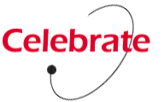LO Metadata [pár ROSSZ LINK és ikon!!!]
Vocabulary and "mapping"
THE PROBLEM OF VOCABULARIES AND "MAPPING"
If it is true to say that metadata is fundamental when researching LOs, it is also true that the context plays a determining role when compiling metadata in pedagogical terms.
For example the picture below can be used in many situations and for many different purposes.
 |
1. How can this picture, or part of this picture, be used in an educational context? 2. How can the content of this picture be described? |
The answer to the first question is “an infinite amount of ways” depending on the imagination of the teacher and/or the student
The answer to the second question is also “an infinite amount of ways” considering the different perspectives one view this picture from, e.g. historical, artistic, ecological , anthropological, etc.
Metadata can clarify the use and the approach adopted.However the metadata still allows freedom of choice between different vocabularies.
For example if two institutes were to use the same standard they could still have problems of conceptual interoperability.
In order to guarantee that the machine understands that between one descriptive system and another a particular relationship exists, it is necessary to make the different parts of the classification system relate to each other. (Intellectually)
This is why we need a Mapping
To understand fully let’s take the example of two schools who wish to share on-line their catalogue of didactic resources and LOs.
Let’s suppose they use the same standard but two different classification systems, for example the Dewey Decimal Classification System and the European Education Thesaurus.
We need a mapping operation so that the machine can search simultaneously in both data banks.
We need to analyse both classification systems and create a relationship between the concepts, independently from their form.
Until now mappings between controlled vocabularies in the same language have actually been realised (for example between the Library of Congress Subject Headings, LCSH and the Medical Subject Headings), including in different languages (for example mapping between vocabularies used in the catalogues of three national libraries: the English, the French and the German) and between different classification systems (for example between the classification system of the Swedish National Library and the Dewey Decimal System)
The ETB (European Treasury Browser), as part of a European project, has finalised the construction of a European repository of educational resources. Many mapping operations have been carried out between the ETB thesaurus and local classification systems or between the ETB thesaurus and other thesauri.
On the basis of Dublin Core and IEEE LOM, standards different application profiles have been created. These are “an assembly of elements of metadata selected by one or more metadata schemes and combined into one compound scheme” (Duval, et. al. 2002)
For further information you can go to the following application profiles: CANCORE, ARIADNE and CELEBRATE.
CanCore Learning Object Metadata is an Application Profile of the Learning Objects Metadata standard (IEEE 1484.12.1-2002); it provides detailed guidance for semplifications and interpretation of each data element in the LOM standard.
It is fully compliant with IEEE LOM standards and IMS Learning Resource Meta-data specifications
The guidelines of the CanCore Application Profile constitute a 250-page document and have been developed through consultation with experts across Canada and throughout the world.
These guidelines are available at no charge from the CanCore Website.
To learn more: http://www.cancore.ca

ARIADNE Educational Metadata Recommendation derives from work and experiments performed, since 1995, by many European and international institutions in the framework of the two European ARIADNE Projects and, since July 2000, of the ARIADNE Foundation. These experiments relied on a simplified version of this metadata specification, as implemented in the ARIADNE first and second generation indexation and query tools and Knowledge Pool System.
The current Educational Metadata Recommendation is an application profile of the LOM specification, in the sense that this recommendation is fully compatible with the LOM specification, and instantiates it for the ARIADNE community.
To learn more: http://www.ariadne-eu.org/en/publications/metadata/index.html

This is the metada model which was devised within the European project Celebrate (Context eLearning with Broadband Technologies, 2002- 2004). It takes inspiration from LOM and introduces a few distinctive elements such as the adoption of a controlled vocabulary for the semantic indexation of the object: ETB Thesaurus - European Treasury Browser - translated in 15 languages.
To learn more: celebrate.eun.org/eun.org2/eun/en/index_celebrate.cfm
